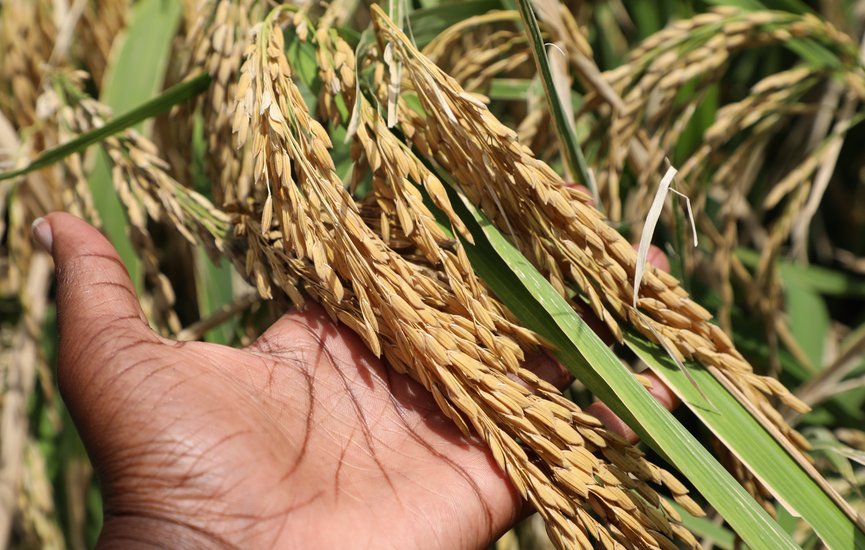CNOOC Uganda Limited has achieved a significant milestone with the successful harvest of the WDR-73 high-yield rice variety under its Innovative Livelihood Restoration Program for Crop Production.
The harvest, conducted in the Kingfisher Development Area in Kikuube District, highlights the company’s dedication to improving food security and restoring the livelihoods of Project Affected Persons (PAPs) and host communities.
Launched in March 2025, the program is being implemented by Hoima Caritas Development Organization (HOCADEO) with technical support from the FAO–China–Uganda South-South Cooperation initiative. Since its launch, two demonstration gardens have been established in Buhuka and Kaseeta parishes to promote modern farming practices.
Over 300 farmers have been trained in improved agricultural techniques, with 80 actively cultivating rice and millet using high-quality seeds, fertilizers, and modern farming methods.
Initial yield projections are promising, with rice expected to produce between 2.5 and 3 tons per acre, and millet anticipated at 1.5 to 2 tons per acre. These results highlight the program’s potential to enhance food security and boost incomes in the participating communities.
The harvest event saw strong participation from various stakeholders, including farmers, local leaders, government officials, and technical partners. Emmanuel Balijwaha, representing the farmers, expressed appreciation for the hands-on training and support, noting that the program had rekindled their belief in farming as a sustainable and viable livelihood.
Zhang Xiaoqiang, Team Leader of the FAO-China-Uganda South-South Cooperation Project, stressed the importance of knowledge transfer and innovation in enhancing productivity and complementing the country’s national agricultural modernization efforts.
Emeu Martin, FAO’s representative in Uganda, commended the partnership for effectively combining international expertise with local involvement to deliver impactful results.
Penninah Aheebwa, representing the Petroleum Authority of Uganda, noted that CNOOC Uganda’s community investment programs align with national content and development strategies. CNOOC Uganda Vice President Ma Peixin reiterated the company’s commitment to inclusive development, highlighting that the first rice harvest underscores the transformative potential of providing communities with the right tools, knowledge, and resources.
Ma also reaffirmed the company's commitment to the Green Ecological Oilfield Development model, which emphasizes the synergy between oil resource development and the strengthening of local livelihoods for long-term community benefits.
In addition to speeches, the event included practical, hands-on learning activities. Farmers received on-site training from HOCADEO agronomists, participated in guided tours of the demonstration plots, and observed a rice harvest demonstration.
Guests also had the chance to sample freshly prepared rice and millet dishes, which showcased the nutritional and commercial benefits of the improved crop varieties.
This successful rice harvest is just one of many initiatives within CNOOC Uganda’s broader community development efforts. In education, over 1,400 students from Kikuube and Hoima districts have received scholarships under the Best Performers Awards. Additionally, 11 Ugandan students have been awarded full scholarships to study at the China University of Petroleum.
Skills development remains a key priority, with over 300 young people trained in heavy goods vehicle driving and ECITB-certified programs, enhancing their employment opportunities in Uganda’s expanding energy and construction sectors.
In healthcare, medical outreach programs and health camps in Buhuka have provided free treatment and services to thousands of local residents.
Environmental conservation is another cornerstone of CNOOC Uganda’s work, with over 1,000 trees planted to promote climate resilience and support the company’s Green Ecological Oilfield vision.
CNOOC Uganda continues to invest in critical social infrastructure, including the construction and equipping of schools, health centers, and water supply systems, improving access to education, healthcare, and clean water for surrounding communities.
